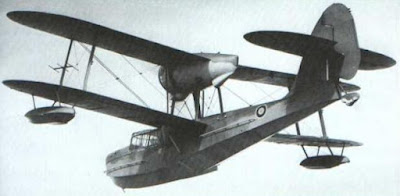The Supermarine Sea Otter was a carrier-based, rescue amphibian aircraft used by the Royal Air Force during World War II. Developed to replace the Walrus I, it flew for the first time on August 20, 1938, entering service with the RAF coastal command squadrons in late July 1943. About 290 Sea Otters were built between 1943 and 1946.
The Supermarine Sea Otter flew with the air-sea rescue service during the Burma campaign between 1944 and 1945, on board the escort carrier HMS Khedive (D-62), with the No 1700 Squadron. It was also assigned to No 1701 Squadron of the East Indies Fleet based in Ceylon in February 1945.
Technical Characteristics
The Supermarine Sea Otter was a four-seat, single-engine biplane. The aircraft wing lower deck was mounted high on the fuselage, while the piston engine was set up high on the upper deck. Both decks were jointed by sturdy parallel struts. The fuselage was all-metal. The biplane was equipped with two floats, one fitted at the end of each wing.
Specifications
Type: communications and rescue amphibian aircraft.
Length: 12 m (39ft, 5in).
Wingspan: 14.02 m (46ft).
Wing Area: 56.67 square meters (610 sq.ft).
Power Plant: one 855-HP, Bristol Mercury XXX, radial piston engine.
Maximum Speed: 241 km/h (150 mph).
Range: 1,167 km (725 miles).
Armament: three Vickers 7.7mm Vickers machine guns.
Below, the Supermarine Sea Otter II version.
